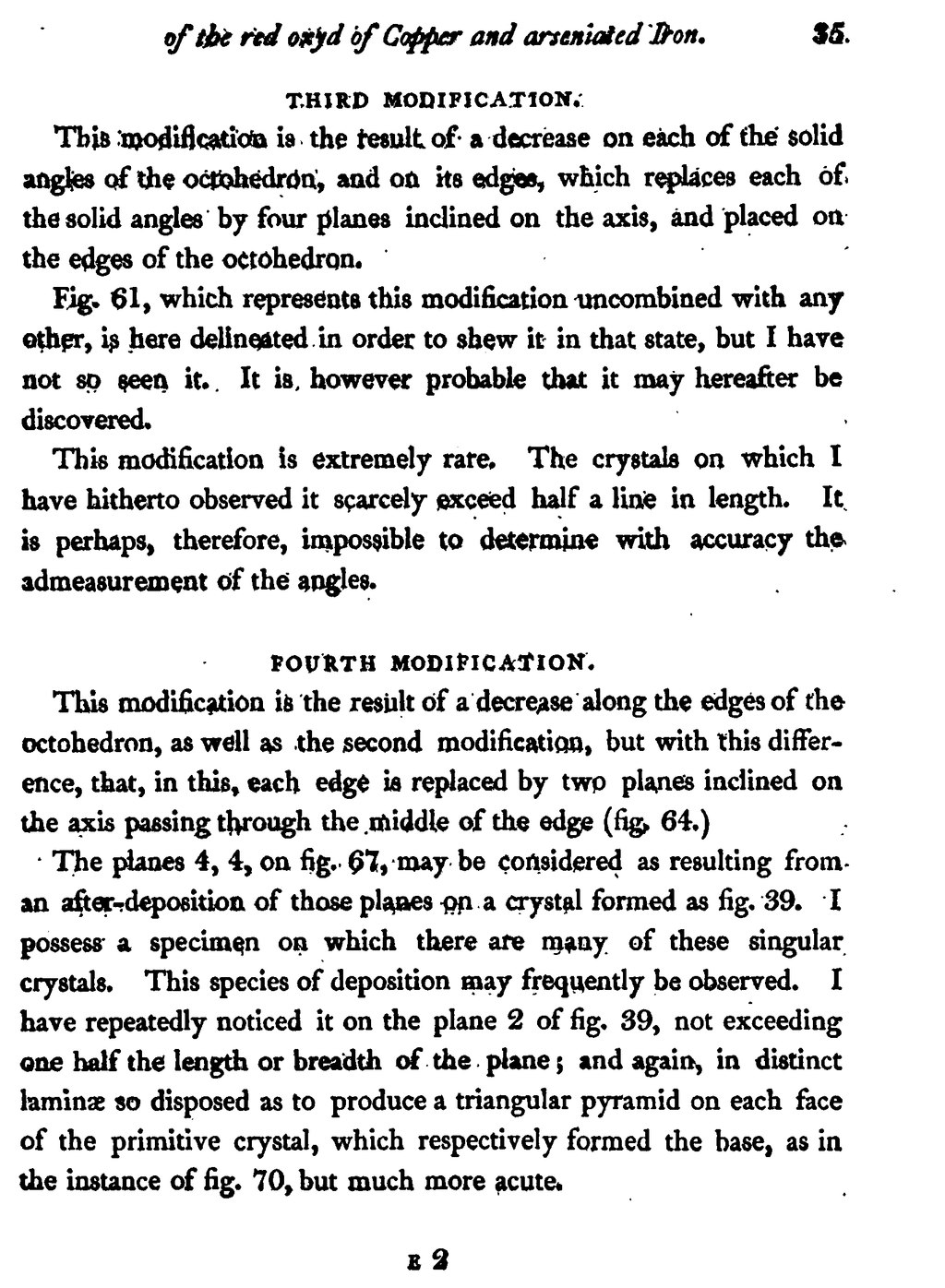THIRD MODIFICATION.
This modification is the result of a decrease on each of the solid angles of the octahedron, and on its edges, which replaces each of the solid angles by four planes inclined on the axis, and placed on the edges of the octahedron.
Fig. 61, which represents this modification uncombined with any other, is here delineated in order to shew it in that state, but I have not so seen it. It is however probable that it may hereafter be discovered.
This modification is extremely rare. The crystals on which I have hitherto observed it scarcely exceed half a line in length. It is perhaps, therefore, impossible to determine with accuracy the admeasurement of the angles.
FOURTH MODIFICATION.
This modification is the result of a decrease along the edges of the octahedron, as well as the second modification, but with this difference, that, in this, each edge is replaced by two planes inclined on the axis passing through the middle of the edge (fig. 64.) The planes 4, 4, on fig. 67, may be considered as resulting from an after-deposition of those planes on a crystal formed as fig. 39. I possess a specimen on which there are many of these singular crystals. This species of deposition may frequently be observed. I have repeatedly noticed it on the plane 2 of fig. 39, not exceeding one half the length or breadth of the plane; and again, in distinct lamina so disposed as to produce a triangular pyramid on each face of the primitive crystal, which respectively formed the base, as in the instance of fig. 70, but much more acute.
e2


